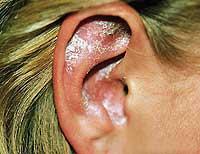Autoimmune diseases and genes
Autoimmune diseases are very complex because they do not depend on a single gene. To find the cure it is necessary to identify all the genes related to these diseases and for this different strategies have been developed. For example, many genetics have begun to analyze the variations of our genes. A Leioa research group uses this strategy to investigate autoimmune lupus disease.
Marker Differences
All human beings are genetically very similar. If you compare the genome of any two people in the world, they will have 99.9% of the DNA sequence. However, these two people present differences, including those that define the characteristics of physical appearance or those that may be at the base of diseases. Some of these differences are found in the markers.

Markers (SNP) are usually present at certain points in the genome and report genes present in the area. If the genome were a road, the markers would be the milestones used to mark the kilometers. There are millions in the genome.
Each of these SNPs is a nucleotide, one of the four basic components of DNA: adenine, guanine, cytosine, or thymine. The appearance of specific nucleotides in some of these markers has been associated with various diseases. In addition, these markers offer the possibility to investigate the entire genome, which allows to locate all the genes involved in complex diseases.
To do this, the variants of the markers of healthy and sick people are analyzed. Among healthy people, it is common to have adenine in a marker and among patients, it is clear that this marker does not define the disease. Conversely, if instead of adenine is the most abundant thymine among patients, it can be said that this marker is related to the disease. The gene search will therefore begin near this marker.
However, the study of these variants requires, first of all, knowing the nucleotide of each marker, which is what they do in Leioa.
Marker identification
To know a person's markers, first you need your blood sample and then DNA is removed. For the identification of SNPs of this DNA there are numerous different technologies, but in most cases, depending on the nucleotide that each SNP has, one color or another is obtained. This identifies the markers based on color.
These studies must be repeated with thousands of healthy and sick people until they complete the database. Finally, with the help of computer science, the differences between healthy and sick human equipment are calculated to identify the markers that are at the base of autoimmune diseases. But the study will not end there, since the results obtained by the Leioa team still have a long way to go until finding genes and getting a cure.
- The title of the project is the identification of susceptibility genes that act on the autoimmune disease of Lupus from the analysis of polymorphism.
- The aim is to identify the genes involved in the risk of developing Lupus disease from associative analysis and PNS technology.
- Director Andone Estonba.
- Working group M. Iriondo, C. Manzano, A. Gil, E. Ochoa, O. Oyanguren, O. Ruiz, A. Solis, F. Rendo, I. Michael.
- Department of Genetics, Physical Anthropology and Animal Physiology.
- Faculty of Science and Technology (Leioa).
Buletina
Bidali zure helbide elektronikoa eta jaso asteroko buletina zure sarrera-ontzian










